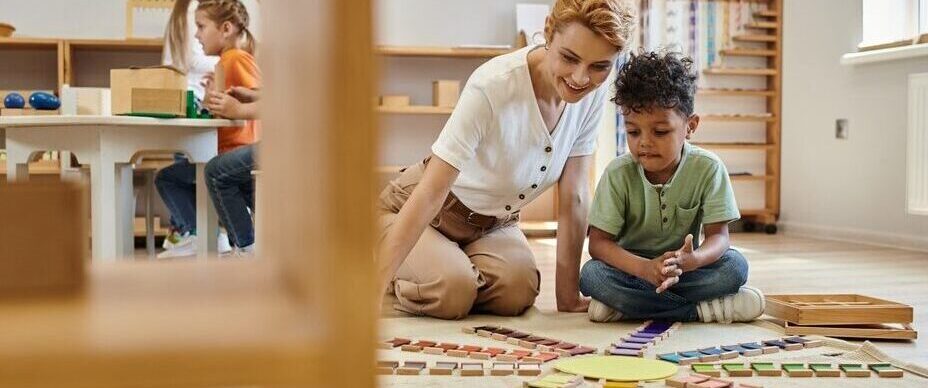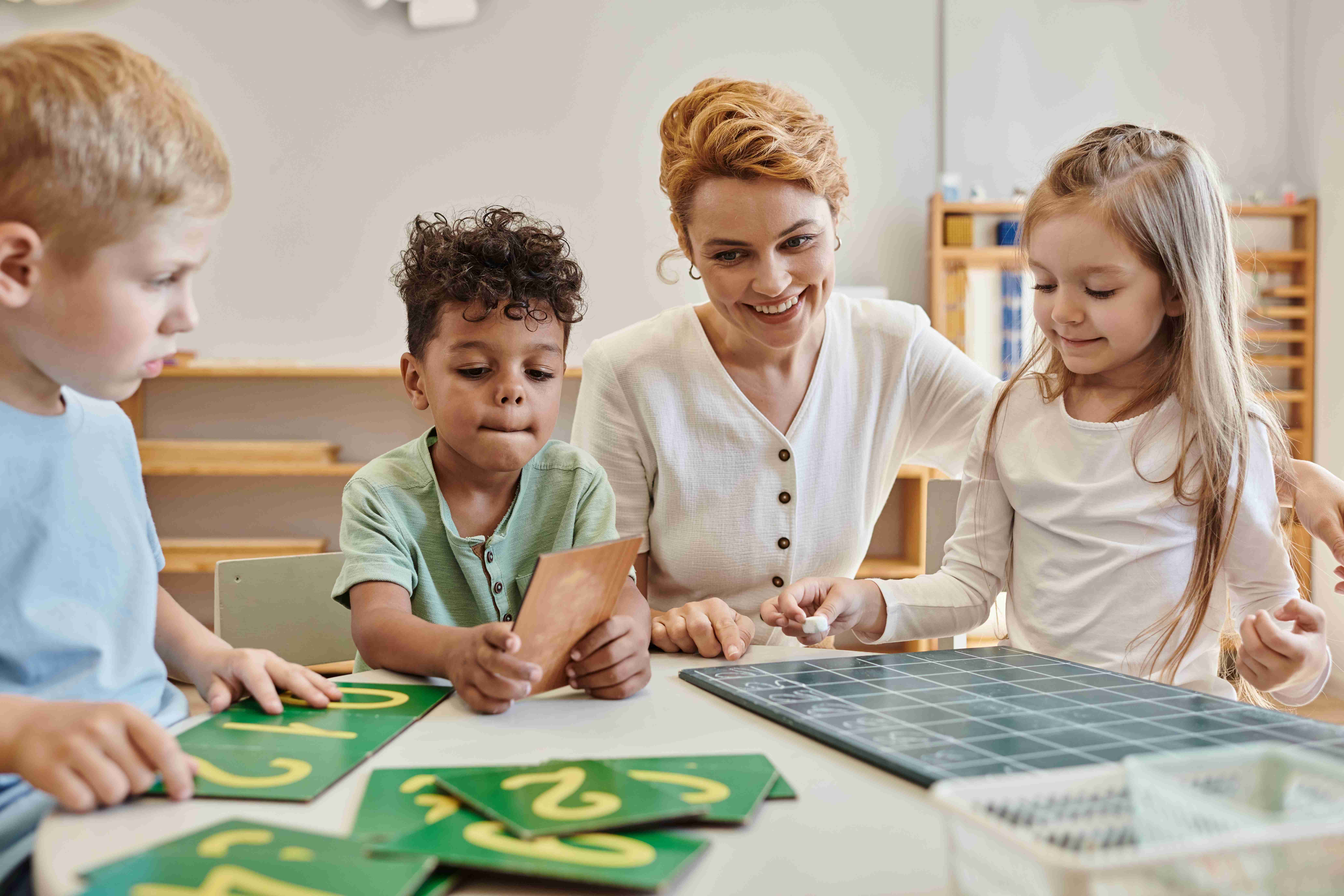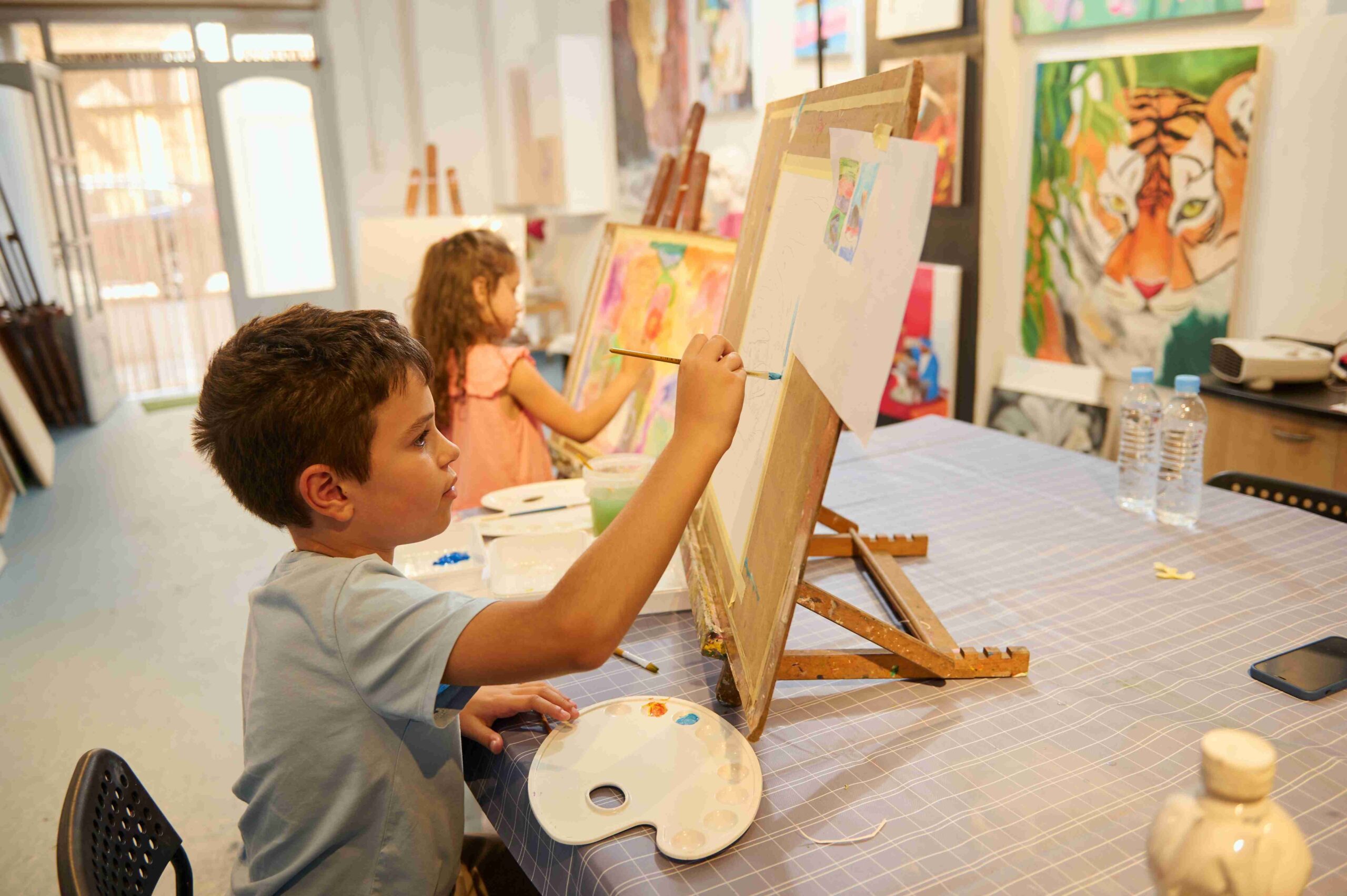Maria Montessori believed that children need to experience real world concepts to inspire their natural curiosity and creativity. But how do you introduce these concepts in ways that are safe and fun? The solution: Montessori materials. As educational materials, they aren’t made just to keep your child entertained. Instead, Montessori materials play a crucial part in child development by giving children a sensory-rich learning experience, teaching them basic scientific concepts, and training them to form concrete skills for their future.
What Makes Something a Montessori Material?
Montessori once said, “The goal of early childhood education should be to activate the child’s own natural desire to learn.” When a material helps bring out your child’s curiosity by reflecting their daily experience, then it’s aligned with Montessori principles. But how do you distinguish Montessori materials from toys?
Features of Montessori Materials:
- Made of natural materials like wood, rubber, metal, paper and different fabrics.
- Encourages purposeful, focused exploration.
- Challenges children with materials that are self-correcting.
- Introduces basic science or mathematical concepts.
Unlike toys which may reward your child with flashing lights and music at the push of a button, Montessori teaching materials are designed to entertain, educate, and inspire through open-ended exploration.
Benefits of Montessori Materials
With materials based in reality instead of fantasy, you empower your child to care for themselves and their environment. Montessori materials are like building blocks, helping your child create a solid foundation for their future as a capable member of your family and society. Let’s break down the benefits one by one:
Care and Respect
Montessori wooden and fabric materials tend to be more fragile, like the wind fabric material, which helps teach your child to be careful and gentle. Being based in reality, these teaching materials give your child a chance to imitate practical life experiences. For example, your child might fold a piece of fabric to pretend they’re folding their own clothes, helping them gain an understanding for daily life activities that will serve them in the future.
Movement
Children, and people in general, tend to spend a lot of time sitting these days. Educational materials can inspire your child to move, such as the cotton rainbow ball which rings as it rolls around, helping your little one explore their own range of motion. By learning how to move without restrictions, your child can learn the joys of being active, which can be key to maintaining their physical health throughout their life.
Focus
Montessori materials help your child master one skill at a time. A material that is too distracting with baubles, colours, lights, and noise can overwhelm your child—preventing them from learning how to focus. On the other hand, materials that teach them a single skill, like the box with ball and tray and how it teaches that objects continue to exist outside of perception, can help your child concentrate and learn through repetition.
Curiosity
Children are constantly experimenting with anything in reach. So it’s important that their toys teach them real lessons about the world. Montessori materials offer opportunities for this kind of learning, teaching your child basic physics or math through exploration. From puzzles to spatial awareness, to weight, temperature, and texture, materials that are based in reality—like the Montessori spooning activity—will invite your child’s natural curiosity and help prepare them for the classroom.
Examples of Montessori Materials
Montessori materials are suited for a wide range of age groups. Dr. Garry L. Landreth, a leading professor on play therapy, once said “Toys are children’s words, and play is their language.” Which is why, as your child grows and develops, they’ll need an evolving rotation of toys and materials to express themselves through healthy exploration.

Infants (Newborn to 18 Months)
Montessori infant materials tend to encourage infant children to gently test their physical capabilities. These range from the classic interlocking discs, which helps develop an infant’s grasping reflex and encourages movement, to the Gobbi Mobile, which can be hung above a baby’s cradle to help their visual capabilities and encourage focus. At Childventures, our infant program follows Montessori principles and uses educational materials to support your little one’s development.
Toddlers (18-30 Months)
Materials for toddlers are best introduced once your child can sit up on their own. Typically, these materials teach basic hand-eye coordination and problem solving, like the wooden stacking material. Others, like the wooden school bus, may test their fine motor skills and encourage open-ended exploration.
Preschoolers (2.5-4 Year Olds)
Once your child is in preschool, you can expect them to want materials that are more complex. For example, a magnifying glass introduces scientific exploration to preschoolers, fostering their sense of wonder as they observe and investigate while using a tool that real scientists use. If your child loves music, a coloured xylophone is the perfect for helping them memorize musical notes and experiment with sound.
Kindergarteners (4-6 Year Olds)
Kindergarten materials aim to foster self-expression and creativity, while also preparing your child for grade school. Magna-Tiles help teach math concepts, such as fractions and geometry. Paint sticks make painting simple and allow your child to unleash their imagination in colourful ways that are—thankfully—easy to clean.
How to Choose a Montessori Material
Children are likely to have a wide range of interests that change as they grow. Notice what daily objects your child is interested in, like cabinets or baskets for example. Once you’ve caught on to their interests, look for relevant Montessori materials. For example, a child who likes opening cabinets might enjoy materials that can be opened and closed.
Too Many Montessori Materials
As your child’s interests change, you may run the risk of buying too many materials to satisfy their growing curiosity. Try your best to avoid this, as it can give your child the idea that needs can be fulfilled with objects rather than real interactions—going against Montessori principles. At the end of the day, materials should prepare your child for reality and not replace your child’s need for the real world.
Contact Us today
Childventures Early Learning Academy uses The Montessori Method in our early childhood programs. Visit our website or contact us for more information.



